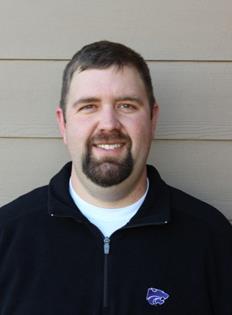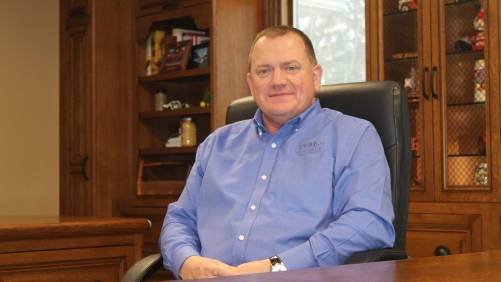Attacking Seed Sales in 2019
Devin Helming, Head of Pioneer Seed Sales with Asmus Farm Supply, Rake, IA, captures the general tone of growers at this moment in 2018. “Farming is not much fun right now. That outlook trickles down to everybody working with them … 2019 is going to be a challenging year.”
The good thing about the seed business, naturally, is that a grower can cut down on fertilizer and whittle away other inputs. But seed has to go in the ground. “Even though it’s tough,” he concedes, “farmers have a positive long-term outlook. They need to keep it going.”

Stallbaumer
Scott Stallbaumer, General Manager at J.B. Pearl in St. Marys, KS, chatted with CropLife® magazine as his area was coming off a severe summer drought that left corn fields fried with yields one-third of normal. (Irrigated corn, he notes, has been at the polar opposite end, performing phenomenally well.)
A season of much lower-than-average yields is a hard hit to take. Then, you’re facing the prospect of a sixth straight year of low crop prices, the specter of higher chemical input costs tied to tariffs, and an array of other increasingly complex dynamics — the seed business being one of them.
Yes, it can be a Herculean task. But you work through it. That’s the key message we took away from speaking with a dozen or so ag retailers across the Midwest.
Time
“Selling a bag of seed takes probably four to eight times more effort than it does to sell a ton of fertilizer. Then we have less margins. But our philosophy is: We want the total acre. If we can limit competition from taking part of the acre away, the better we are off in the long run,” Stallbaumer says.
It’s amazing the emotional attachment that growers have to corn hybrids, he says. “They take it to heart more than anything else, and it creates more agony.”
You could put in countless hours of work on getting a hybrid tested and listed, but if you’ve predicted a heatwave or rainfall wrong, you can lose it in a day. “Growers will blacklist it, and it’s done.”
Whether corn is $3.50 or $7, the thought process is the same. Growers want to inspect every inch of their potential investment in advance for everything from cob color to ear placement — and often, to their detriment, will sway in favor of appearance over agronomic advice.
The full-service ag retailer’s job selling seed today is like Googling a guy named “Don Smith.” The one you want is not magically going to appear at the top.

Secor
George Secor, President/CEO, Sunrise Cooperative, Fremont, OH, is spending exponentially more time these days sorting through the onslaught of brands and varieties, their wildly varying price tags, complex genetics, and weighing those factors against limiting factors of a grower’s field.
You’ve got to look at the value proposition — not the cost of the bag, he says.
“Just because you produce the most yield doesn’t mean you produce the most value,” he says. “While everybody wants to plant the racehorse, the $400 one that produces 300-bushel corn, there is no sense in buying that seed corn if your ground produces 150 (bushels/acre.) What it really means is, from a retail perspective, we’ve got to do a lot better job of aligning the realistic expectations of the ground with the seed corn we’re putting on there.”
For Some, a Credit Crunch
This year waffling on a seed purchase over miniscule yield differences could be trumped by bigger concerns, such as if growers will be able to pay for it at all.
First, let’s be clear: Not all ag retailers and co-ops report seeing credit problems.
Secor says that since the 2013 commodity price collapse, “Farming is run more like a business than it ever has … Our customers understand good times don’t last forever. Financial stability is as good as I’ve ever seen it coming into this last downturn.”

Coppess
For many others, like Dave Coppess, Vice President of Sales and Marketing, Heartland Co-op, West Des Moines, IA, it’s not quite the same story. You can hear an edge of concern in his voice.
“This year we jumped out with some early cash discounts on seed, bumping them up from 8% to 12% for one night at our plot tour, and we signed a lot of commitments. I think the biggest challenge we are going to face is credit and collection issues,” he tells CropLife. “Getting pre-pays in by our Nov. 30 deadline may be a bigger challenge than we’ve experienced in other years. Seed is the first indication of that.”
While a fair amount still have cash, many have burned through it and are waiting until they sell crop this fall to pre-pay.
“Chemical manufacturers are all raising their prices 3% to 8%, using the tariff deal (as the reason.) Fertilizer is probably 5% to 10% higher than last year, so that the marginal corn growers can’t make a profit next year. Bankers will hear that. It’s a serious situation,” Stallbaumer warns. “Not everybody will be OK. It hurts us buying other inputs so it’s kind of a snowball effect. It’s a big concern for retailers on how much debt can we afford to carry.”
He continues: “We get stories a lot, ‘We’ll get you settled up once harvest starts.’ Then it’s 30 days after harvest, and you’re still not settled up; those are the ones you’ve got to be really concerned about. That means they’re not going to pay you until they get another operating loan the following year, and all of a sudden they’re using the next operating pay loan to pay for last year’s crops. That cycle can’t go for too long.”
Ag retailers, he points out, don’t deal with customers’ credit issues as well as they might. “We simply don’t have the viciousness of credit card companies or other lenders. That’s never been the farming way, and that’s what everybody’s struggling with. Neighbors help neighbors. I don’t have a good answer for it. We talk about it, but how do you tell somebody they can’t continue their career that they’ve done for 20 some years anymore? We probably work too hard to make sure they don’t fail when it was probably smarter to pull the plug five, 10 years ago.”
A New Reality
With the Iowa ag economy worth about half of what it was six years ago, another dynamic entering the fray is rent. The state’s farms are 60% rented land, and “so far, we are not hearing a lot of folks indicate that they have locked in their rented ground for crop year 2018. That could delay some fall fertilizer and commitments on seed until they get their land secured,” Coppess cautions.
According to the Farm Bureau, Nebraska, Iowa, Illinois, and Indiana all came in with rental rates near or above $200 per acre in 2018. Those rates are up over the previous year’s values, even with corn and soybean prices facing significant downside pressure.
Heartland’s grower-customers, seeking to average a lower cost per acre across their fields, have been increasingly willing to blend top varieties with older, proven varieties that are priced lower.
For Greg Spears, Chief Development Officer at Heritage Cooperative, West Mansfield, OH, persuading growers to invest in seed that hasn’t lost its value while so much else has comes down to relationship building.
“At the end of the day, seed selection and having that relationship with the grower controls a lot of things. It sets the game plan for what you’re going to do the rest of the year. We’ve ramped up a lot more in-house training for our sales force to get to know different brands we offer as well as technologies we can utilize to show the data we can offer from a precision technology standpoint with soil types, populations, and so forth. A lot of factors come into play, and it’s really pushing us to make our sales people better,” Spears says. “For us, we have had to sharpen our blade to make sure we get the value proposition in line based off traits, performance, and have data to show that.”
In years past Heritage may have called customers three to four times to finalize seed purchases. Now it takes eight to 10 visits to show the grower the data, walk them through the numbers, and “try to pencil out the ROI for the overall portfolio they’re going to put on that acre,” Spears explains.
Consolidation
Consolidation in the ag industry is also leading to more bundling of the seed and the crop protection acre.

Thompson
“It’s about convenience, and it’s about locking up that acre all the way around. Hopefully it’s aimed at the best interest of the grower, but obviously it’s also aimed at trying to do what’s best for that company,” says David Thompson, National Marketing and Sales Director, Stine Seed.
One retailer, which asked not to be named, says their operation has started to feel minor effects of consolidation from Syngenta’s AgriEdge program, but they do not expect pressure to ramp up until 2019 or 2020 when Monsanto and Bayer introduce their programs. He has received word on a new program from BASF but had no details on it yet.
Not everyone believes the tie-ins are a negative — or that they will even survive.
Secor believes the mergers will level the playing field. Divestitures could cancel out pairing of certain varieties and chemistries, and the country’s shrinking number of farmers will find themselves with more power to demand the freedom to break out the seed and crop protection they need, he says.
“Our hope is that seed becomes less complicated to buy. All of the discounts, pre-pays, jumping through hoops (will go by the wayside),” he says.
Mark Powell, Seed Sales Manager, BRANDT, Springfield, IL, says of the Big Four: “They want to own the acre with us. I think it makes it more complicated because we like to offer the grower the best solution for him. The programs are not always the best solution, depending on what his weed problems are and the genetics he needs.
“You can save $3 to $10 an acre with a program, but are you really saving? Are you saving yourself to a profit or are you trying to yield your way to a profit? It’s really what you make at the end. Just because you save $3 to $10 doesn’t mean you’re going to keep all that.”
Coppess is uneasy about the unknowns of consolidation. “We’re going to have some different people making decisions on behalf of those companies and how that will impact us as part of the distribution channel — that’s a huge question.”
Questions about online ordering system plans by the Big Four and chemical wholesalers linger. For one, it is yet to be seen what role the ag retailer will have as part of the distribution channel, and to where online orders will be directed in a given area.
‘The Trusted Adviser’
Through the good and the bad, Thompson remains convinced that the conversation with the grower needs to begin with genetics. Stine has worked on its HP corn for 15 years now, driven by the idea that that higher populations can drive increased yields — and that, based on yield data over the last 80 years, it can accelerate that trend.
Thompson has often seen a tendency for growers to go with an individual seed company for a variety of reasons: volume-based discounts, loyalty discounts, and such things that might help their bottom lines. On the other side, they are minimizing the number of brands because they want — and need — to find trusted partners.
“The seed business has become very complex over the last several years between trait packages, cropping practices, product placement, and seed herbicide systems,” Thompson says. “I think what’s happening is growers are saying, ‘Hey, I used to work with anybody and everybody, but now I think I need to put my eggs in just a couple of different baskets and I need to choose trusted advisers who can help me.’”
BRANDT has seen customers go to ecommerce and then return, unhappy with internet sellers’ lack of support and inflexibility.
We heard similar stories from other retailers. They noted that seed is the most difficult input to sell online due to factors like blending of traits and varieties, last-minute substitutions, and the aggressive price negotiation that goes on at the farm gate.
“That’s why it’s important to know the customer and what the history is on their acre. Going online and ordering makes that tougher,” says Diane Zyski, Seed Manager with Sunrise Cooperative, Fremont.
“The FBNs of the world are touting different prices all over the country,” exploiting zone pricing from the Big Four to their advantage, Powell adds. He acknowledges the practice has prompted questions from growers — but as of yet no major problems.
“For us as retailers I think we have the opportunity to be — I hate to use this buzzword — the trusted adviser. If you’re the guy assisting the grower and getting him the right solutions, you don’t have a problem with ecommerce. But if you’re not the guy helping him with that, then you’re a commodity seller to him,” Powell says.
BRANDT is reviewing ecommerce platforms, but does not feel it’s the right place to sell seed.
Heartland Co-op, meanwhile, is exploring expanding its current online ordering system that is currently used for other commodities. Adding packaged products such as seed, Coppess says, will be a little more complex. ◗






